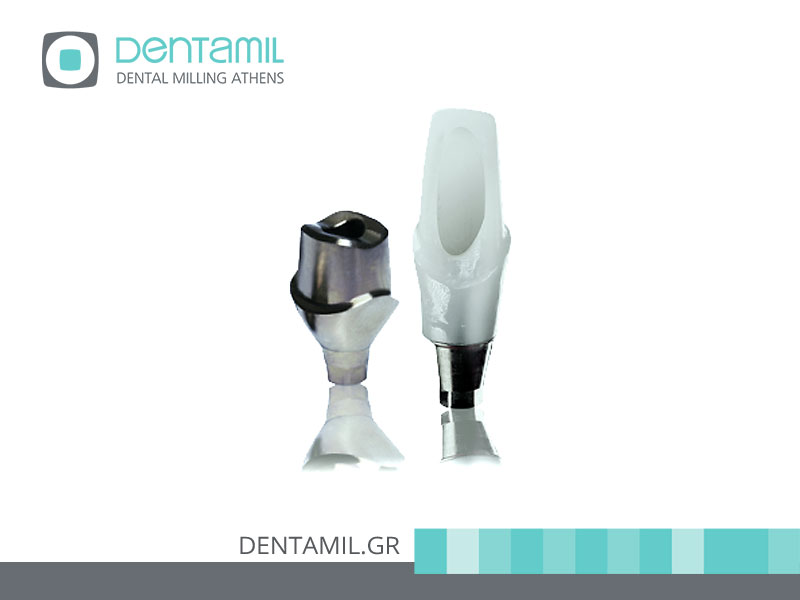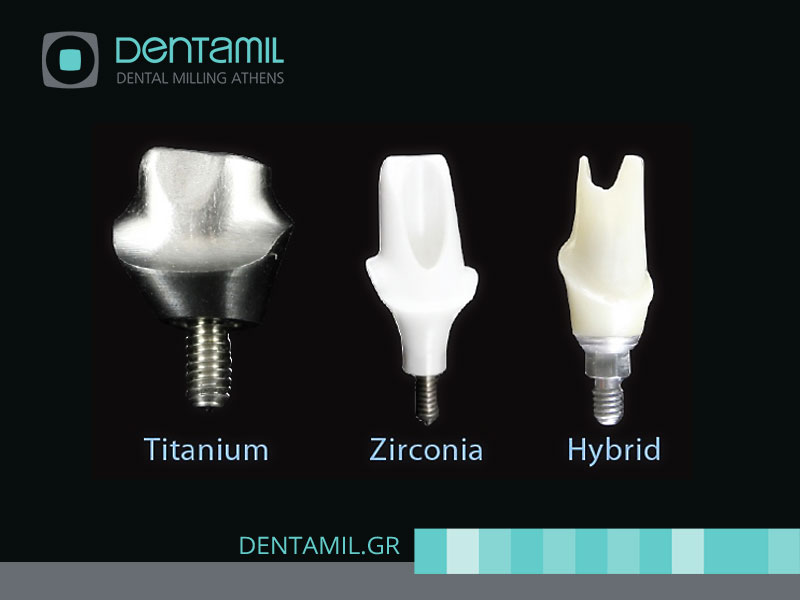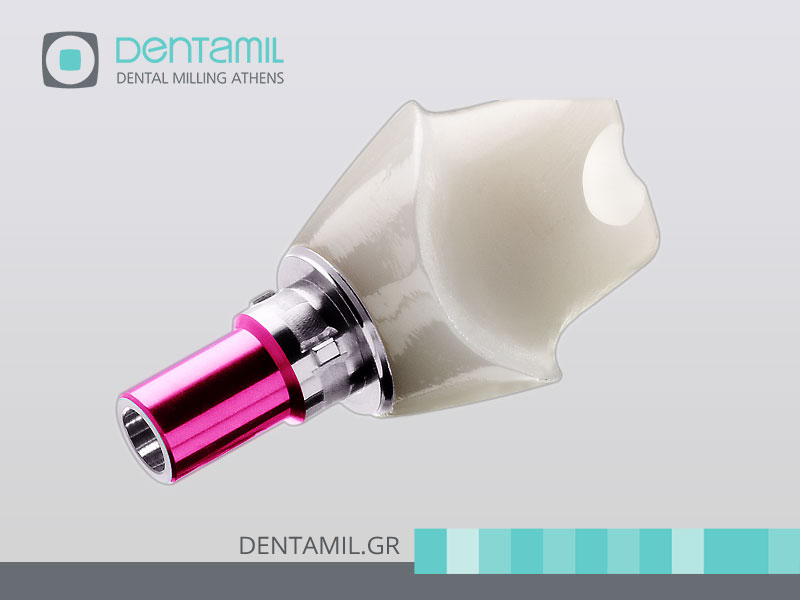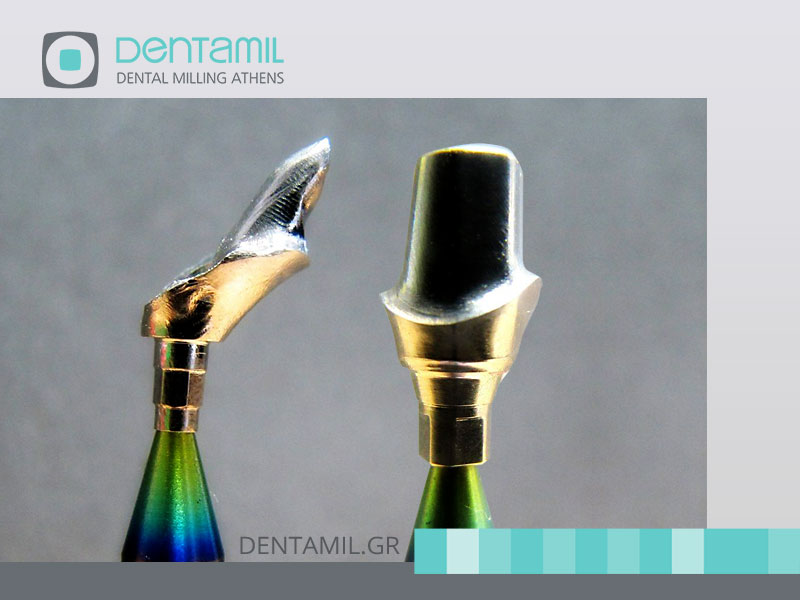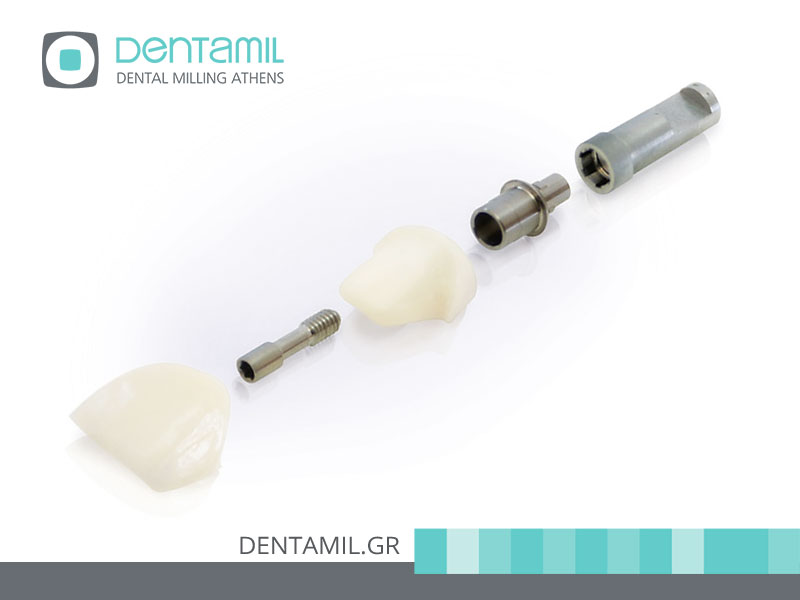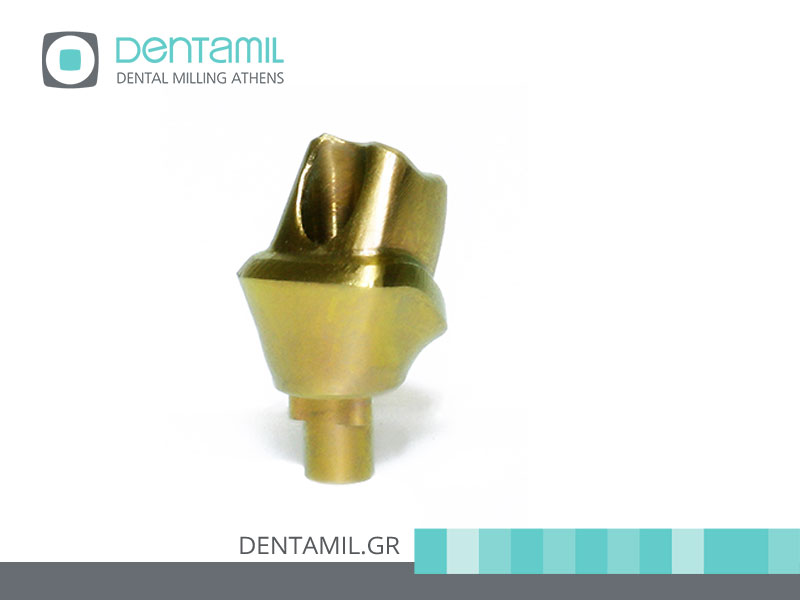To achieve highly aesthetic, functional, and hygienic dental implant restorations, the following are required:
- Adequate bone width and height
- Adequate soft tissue thickness
- Proper implant width
- Precision implant position, angle, and depth
- An abutment that follows natural tooth anatomy at the gingival interface
- A crown that has proper contour and marginal integrity following the emergency of the abutment
- Proper anatomy of the abutment and crown at the embrasure space to support the papilla
Custom abutments described first time in 1988. Traditionally, these abutments were a plastic sleeve or a gold cylinder that could be waxed within certain specifications and cast in metal alloy to fabricate an abutments that sits on a patient’s dental implants. These abutments are following the exact manufacturing procedure like any other traditional casting and can be designed for cement or screw-retained restorations.
With the continued research and evolution of dental technology, abutments now can be designed digitally and fabricated using milling technology for each unique patient. Thus, by definition aspect these CAD/CAM abutments are defined as custom abutments.
So now, there is no longer the need to wax and cast abutments, and dentists and dental technicians can design and fabricate from their comfortable office. CAD/CAM custom abutments are economical from overall workflow aspect to be fabricated and provide optimum contours for the implant restoration resulting in excellent esthetics and function.
CAD/CAM Abutment Design
There are two digital workflows for the fabrication of a custom abutment.
1. In the first workflow, a conventional impression is made of the head of the implant , so then to fabricate a master gypsum cast in which is the implant position and the angulation related with other structures in the dental arch. Then the master gypsum cast is verified for accuracy and scanned by a desktop dental scanner, in order then to produce a digital master cast. After that, customs abutments can be created and designed digitally with optimum anatomical contours in order to provide the appropriate retention form and resistance, optimum hygiene for the patient and esthetic emergence profile. The width , the location the abutment margin type and the restorative space can be manipulated also to produce an abutment that can accommodate a restoration of full coverage. These days the majority of custom abutments are fabricated using this workflow. 2. In the second workflow, a digital impression is produced by using specifically designed impression copings for digital impressions, which are also known as scan bodies. A scan body is used in order to index the implant position and to obtain a digital master cast. Then, the digital master cast is used to design virtually a custom abutment, which can be milled later and then sent to the dentist / implantologist / oral surgeon. Choosing to work with this workflow will lead to the need of elastomeric impression material for the production of more accurate dental restorations. All almost intraoral scanners of the market are capable to create impressions of implant scan bodies , so in the end to design and fabricate a custom abutment just like that prescribed from the clinician.These custom designed implant abutments are available in two materials:
- Zirconia
- Titanium
Custom vs. Prefabricated Abutments
An often asked question by most clinicians when planning for dental implants, is whether to use a prefabricated abutment or custom abutment. Some clinicians use prefabricated abutments to lower cost and eliminate the time required for custom impression. The fact is prefabricated abutments are very limited in their use and are inappropriate for most sites. This occurs because they do not provide the proper support, emergence profile and contour for the upcoming restoration. As a result, the patients often complain of unaesthetic crowns and problems with frequent food impaction. It is recommended to always use custom abutments which consistently provide better results.
While prefabricated abutments may be cheaper and quicker to do, they rarely provide the type of results that patients expect. Custom abutments are the option of choice for all dental implant restorations.
Please check the following examples:
Custom vs. Prefabricated Abutments
| Prefabricated Abutments | Custom Abutments |
|---|---|
| Indications | Indications |
|
|
| Prefabricated Abutments | Custom Abutments |
| Advantages | Advantages |
|
|
| Prefabricated Abutments | Custom Abutments |
| Disadvantages | Disadvantages |
|
|



